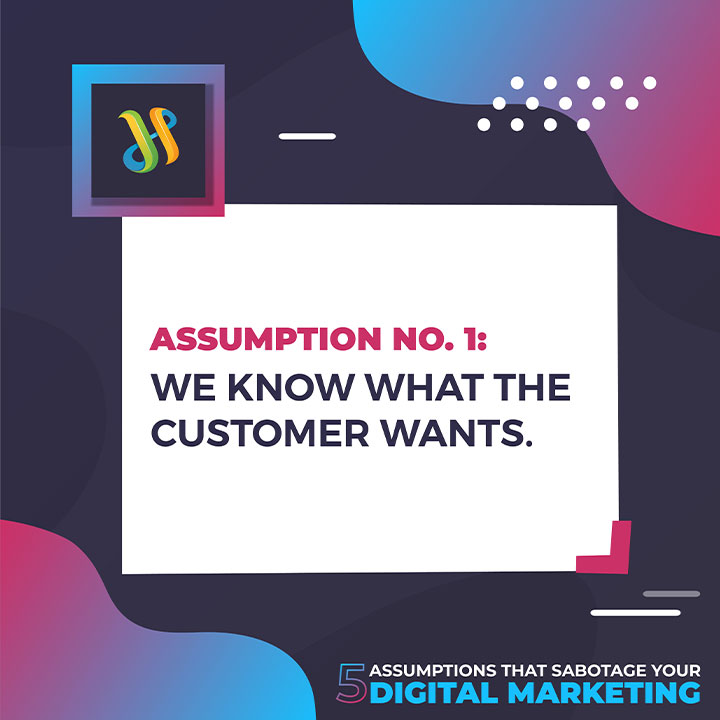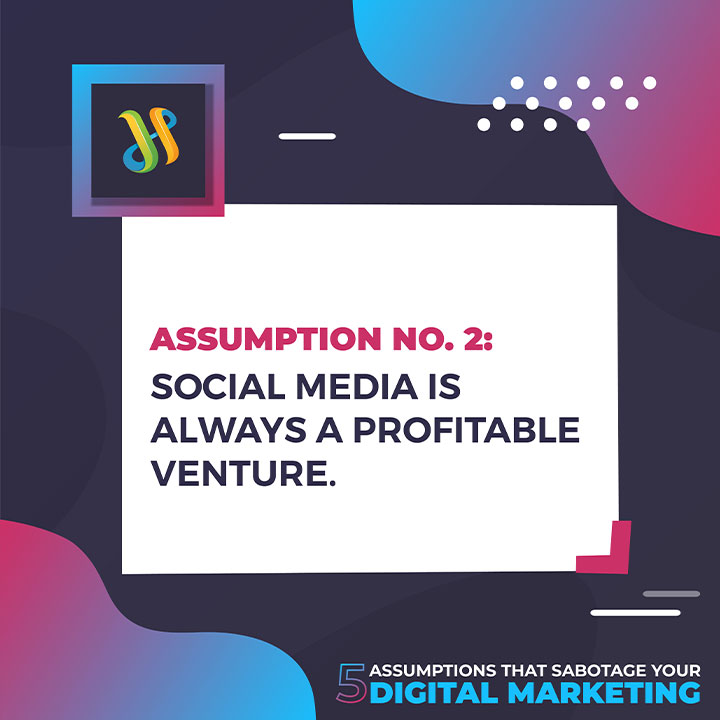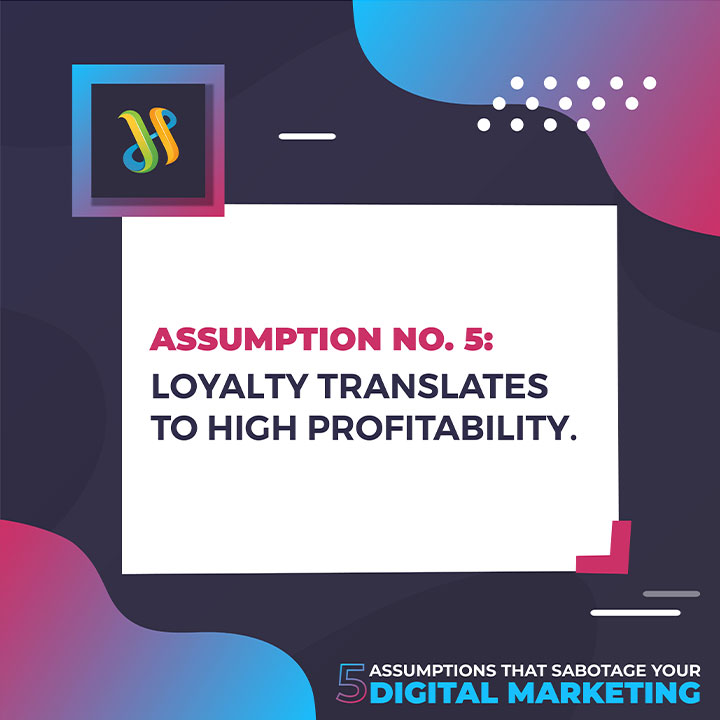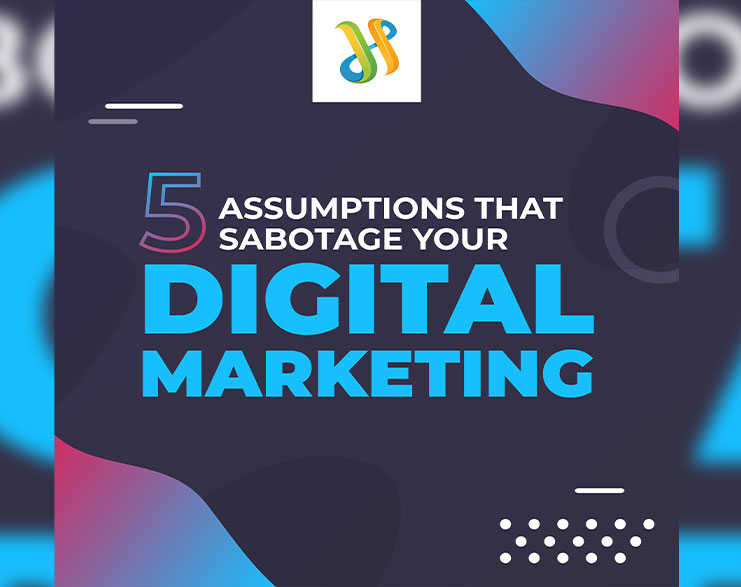Marketers’ worst mistake is making assumptions not backed by research, because when you guess rather than know with great certainty you can head down a time-consuming and costly path. See more! Here are the assumptions that sabotage digital marketing.
Assumption No. 1: We Know What The Customer Wants.

The first assumption that sabotage your digital marketing. It’s the marketers’ job to know their customers and to accomplish this, they usually complete quite a bit of work – oftentimes creating personas and getting into the heads of each segment. But sometimes things go wrong. Marketers get off track and start assuming too much.
Don’t make assumptions about your customers, even if, as marketers, you know them well. Test your assumptions, use real data, and ensure the response that you will receive is positive before taking action.
Assumption No. 2: Social Media Is Always A Profitable Venture.

Simply engaging on social media, is not enough. Even if engagement is high, that doesn’t write a check for higher revenue. In fact, a lot of marketers are making some dangerous assumptions about social media.
Social media is still young, and many marketers struggle with selecting the right key performance indicators (KPIs). Quantifying a return on investment, however, can be hard. It’s not for lack of data; social media metrics are simple to obtain.
Key takeaway. Don’t get caught in the dangerous assumption that likes and shares automatically translate to profits. Test that engagement to see whether it truly improves your bottom line.
Assumptions No. 3: You Can Guess About General Trends.

Access to data about general trends is valuable, but it shouldn’t be used alone to determine what to offer customers and how to market it. General trends are useful; however, use them as a starting point and then conduct your own research. Do those trends apply to your customers? Modify your marketing approach as appropriate.
Assumption No. 4: All Customers Are Equal.

Most marketers are familiar with the 80/20 rule, which was first introduced by Italian economist Vifredo Pareto. In business, this rule states that 80 percent of your business comes from 20 percent of your customers. With regard to productivity, it says that 80 percent of the results come from 20 percent of the actions. You get the point. However, some assume that all customers are equal. But a recent study found that when it comes to social media, as highlighted above, this is not always true.
The vast majority of customers who follow brands on social media do so for the discounts, coupons, and sweepstakes. Moreover, these customers may not add the most value to your brand.
Key takeaway. Find out where your most profitable customers are spending time and refocus marketing efforts to grow those relationships and find more customers who fit that profile.
Assumption No. 5: Loyalty Translates To High Profitability.

Some marketers believe that customers who have been with the company the longest and purchase with high frequency are the most profitable. Yet this too is an assumption. Even though these customers are high-frequency purchasers, it doesn’t mean those purchases carry the highest profitability. Try examining loyalty and profitability in another light. Who are your most profitable customers? Build personas for those individuals. Are these customers also the most loyal? Look for overlap, and find areas of potential for new opportunities.
There are some things a marketer should never guess about – branding, logos, and even the colors that customers like best. Additionally, the simple elements of the customer experience, such as whether your customers prefer to talk on the phone or chat live on the website, can also become dangerous pitfalls when combined with assumptions. Use existing data, but also collect your own to create a better understanding of customers and, consequently, stronger and more powerful marketing strategies.




